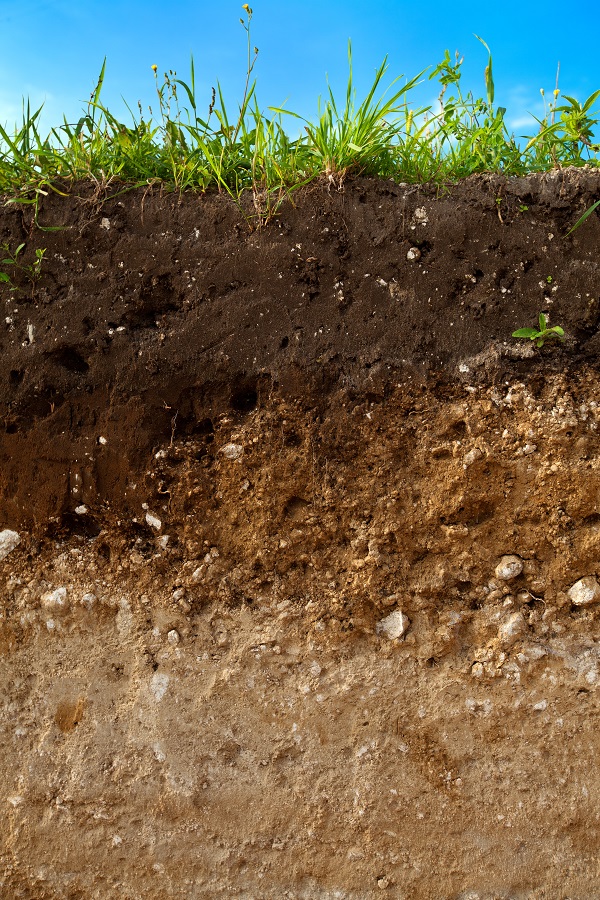SOIL HEALTH & REGENERATIVE AGRICULTURE
What is Soil Health?
The definition of soil health has evolved over time. The most significant change is the recognition that soil is a living system:
Soil health is the capacity of soil to function as a living system, with ecosystem and land use boundaries, to sustain plant and animal productivity, maintain or enhance water and air quality, and promote plant and animal health. Healthy soils maintain a diverse community of soil organisms that help to control plant disease, insect and weed pests, form beneficial symbiotic associations with plant roots; recycle essential plant nutrients; improve soil structure with positive repercussions for soil water and nutrient holding capacity, and ultimately improve crop production. – Food and Agriculture Organization, 2008

Building Soil Health, A Primer*
Least Amount of Mechanical Disturbance as Possible
Soil disturbance can be the result of physical, chemical or biological activities. Physical soil disturbance, such as tillage, results in bare and/or compacted soil that is destructive and disruptive to soil microbes, and it creates a hostile environment for them to live. Misapplication of farm inputs can disrupt the symbiotic relationships between fungi, other microorganisms, and plant roots. Overgrazing, a form of biological disturbance, reduces root mass, increases runoff, and increases soil temperature. All forms of soil disturbance diminish habitat for soil microbes and result in a diminished soil food web.
Diversify Soil Biota with Plant Diversity
Plants use sunlight to convert carbon dioxide and water into carbohydrates that serve as the building blocks for roots, stems, leaves, and seeds. They also interact with specific soil microbes by releasing carbohydrates (sugars) through their roots into the soil to feed the microbes in exchange for nutrients and water. A diversity of plant carbohydrates is required to support the diversity of soil microorganisms in the soil. In order to achieve a high level of diversity, different plants must be grown. The key to improving soil health is ensuring that food and energy chains and webs consist of several types of plants or animals, not just one or two.
Biodiversity is ultimately the key to the success of any agricultural system. Lack of biodiversity severely limits the potential of any cropping system and increases disease and pest problems. A diverse and fully functioning soil food web provides for nutrient, energy, and water cycling that allows a soil to express its full potential. Increasing the diversity of a crop rotation and cover crops increases soil health and soil function, reduces input costs, and increases profitability.
Keep a Living Root Growing Throughout the Year
Living plants maintain a rhizosphere, an area of concentrated microbial activity close to the root. The rhizosphere is the most active part of the soil ecosystem because it is where the most readily available food is, and where peak nutrient and water cycling occurs. Microbial food is exuded by plant roots to attract and feed microbes that provide nutrients (and other compounds) to the plant at the root-soil interface where the plants can take them up. Since living roots provide the easiest source of food for soil microbes, growing long-season crops or a cover crop following a short-season crop, feeds the foundation species of the soil food web as much as possible during the growing season.
Healthy soil is dependent upon how well the soil food web is fed. Providing plenty of easily accessible food to soil microbes helps them cycle nutrients that plants need to grow. Sugars from living plant roots, recently dead plant roots, crop residues, and soil organic matter all feed the many and varied members of the soil food web.
Keep the Soil Covered as Much as Possible
Soil cover conserves moisture, reduces temperature, intercepts raindrops (to reduce their destructive impact), suppresses weed growth, and provides habitat for members of the soil food web that spend at least some of their time above ground. This is true regardless of land use.
*Adapted from Gabe Brown’s presentation “Keys to Building Healthy Soil”
More Resources
- Soil Health Information Packet, prepared by Brad Weltzien, Blackfoot Challenge Land Steward
- “Keys to Building Healthy Soil” presentation by Gabe Brown, North Dakota producer
- “It Starts with the Soil” presentation by Ray Archuleta, Natural Resources Conservation Service
- “Cover Crops for Grazing” presentation by Gabe Brown
